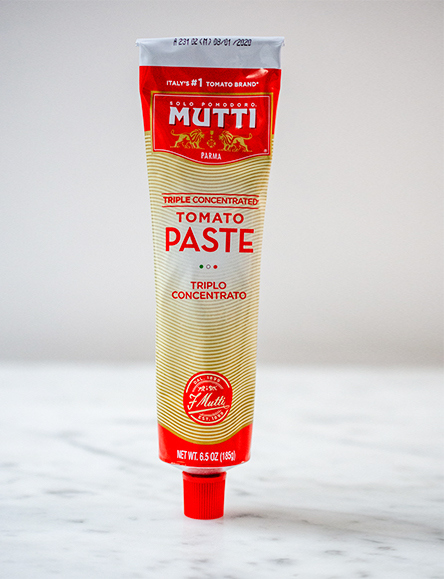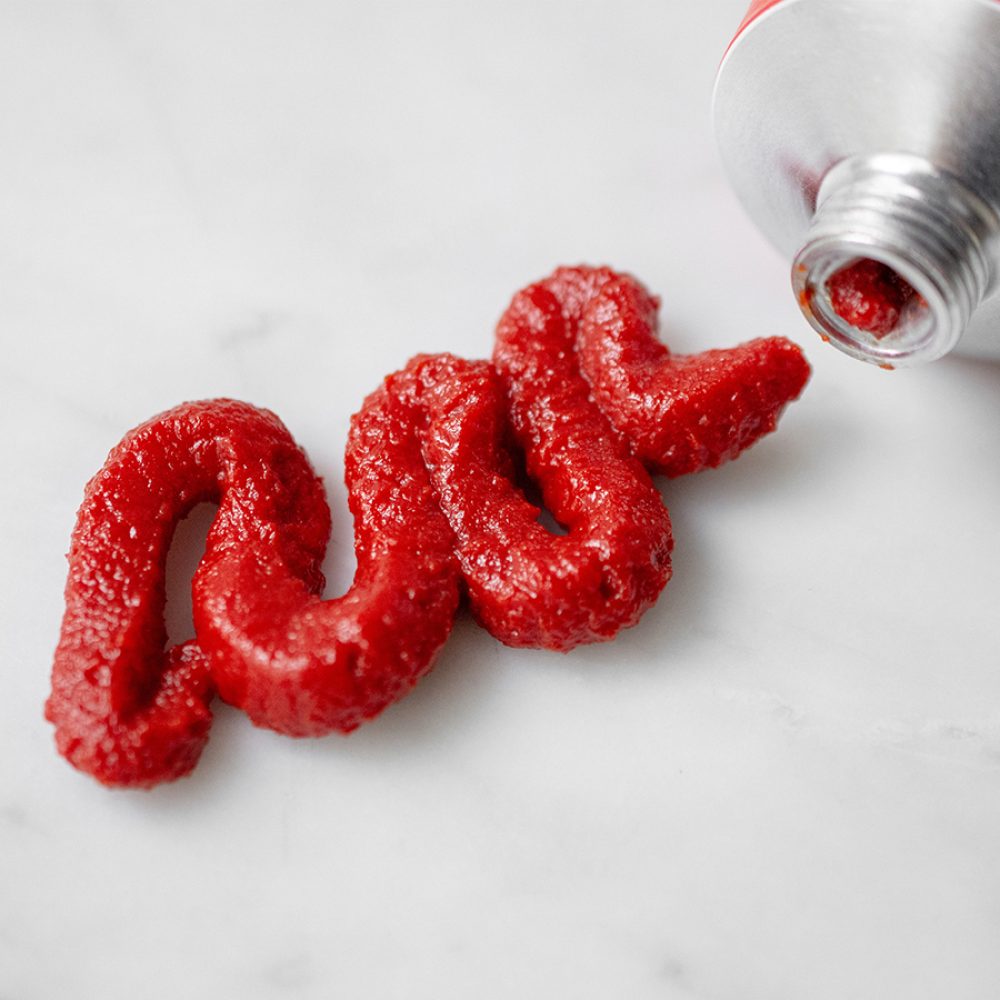New Rule: Brown tomato paste in oil to add more depth to sauces and stews in a way that won’t necessarily taste like tomatoes.
To maximize the richness of nearly any saucy meal, look no further than the tomato paste in your pantry. This is one ingredient that’s already a concentrated source of flavor, but we use a simple technique to transform it into an umami-packed meal booster.
By deeply browning tomato paste in oil, we draw even more flavor out of it. When browned, it becomes incredibly savory and rich, adding more depth to sauces and stews in a way that won’t necessarily taste like tomatoes.
Traditionally, tomato paste was made by drying tomato sauce on wooden boards in the sun; the result should be a sun-dried flavor and caramelized richness reminiscent of molasses. While it may be cooked, dried, seeded and dehydrated mechanically now, good tomato paste should have the same flavor characteristics. Most importantly, it should not be overly sweet—as the tomatoes cook, their amino acids break down to produce umami compounds, so the tomato paste has a robust savoriness.
If you need more convincing, try tasting the tomato paste straight out of the tube or can. Uncooked it has an acidic, even metallic taste that dissipates as it cooks. But browning takes it one step further, caramelizing the natural sugars in the tomatoes and activating complex flavors of compounds called glutamates, which equate to umami and enhance savoriness while reducing acidity in the tomato paste.
“Browning adds depth to nearly any savory, stewy dish,” says Rosemary Gill, the director of Milk Street’s Cooking School. “You’ll get more richness, and feel more satiated even with vegetarian meals. It’s absolutely the best way to maximize the flavor of this one ingredient.”
What kind of tomato paste should I buy?
In general, we far prefer tomato pastes in tubes over canned varieties that inevitably have a metallic taste. And we prefer Italian-made tomato pastes to American-made ones, as the flavor is a little less caramelized and the texture is a little looser, giving us more flexibility for how we use it.

We’re partial to Mutti’s Triple Concentrated Tomato Paste, an Italian brand with a cult following—a little goes a long way. Or for a fruitier, less concentrated option, try Maria Grammatico Tomato Paste.
Single vs. double vs. triple concentrated tomato paste
The more concentrated tomato paste is, the less you need. That does not mean that more concentrated is always better. When we are browning tomato paste, in fact, we sometimes prefer milder pastes for two reasons. First, we need to start with enough quantity so the reduced amount is still substantial. Second, double and triple concentrated pastes can reduce down into something too rich.
How do you cook with tomato paste?
Generally speaking, you’ll want to brown your tomato paste in oil after you’ve sautéed any aromatics or spices. For most sauces and stews, cook the garlic, onion or other vegetables over medium-high until they start to soften and brown at the edges, then add the tomato paste and cook, stirring with a silicone spatula, until it darkens slightly. This should take about 5 to 7 minutes, scraping the bottom of the skillet so it doesn’t burn. Then add any cooking liquid to deglaze the pan and continue cooking.
Try it out on our recipe for Pearl Couscous and Zucchini Salad with Tomato Vinaigrette, Chickpea and Harissa Soup (Lablabi), or Greek Peas with Potatoes and Herbs. And watch how to transform a simple can of regular tomato paste into the best sauce for Pasta with Tomato, Garlic and Basil.
Join the conversation on Facebook, Twitter, Instagram and Pinterest
And if you're looking for more Milk Street, check out our livestream cooking classes with our favorite chefs, home cooks and friends for global recipes, cooking methods and more.
Get Ready to Cook
4
Servings
35 minutes
Get Ready to Cook
8
Servings
1 hour
Get Ready to Cook
4
Servings





